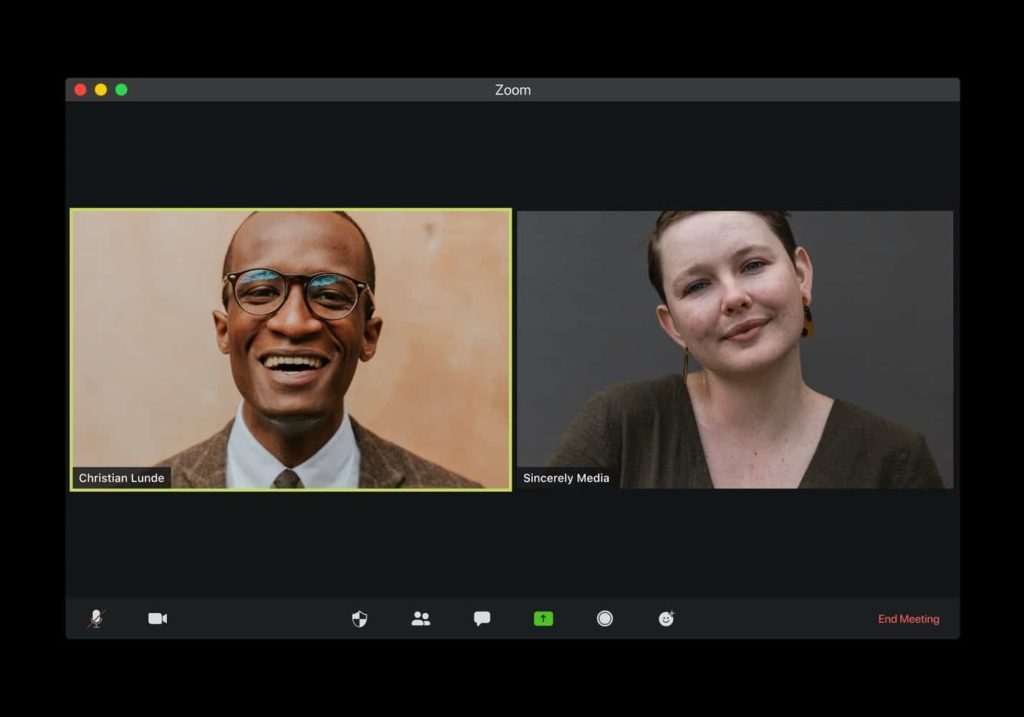
Over the last year and a half (especially after the Covid-19 hit) organisations worldwide have been witnessing a shift in the way they work.
As a result, we are living today in a world where virtual teams have become the norm in almost every corner of the globe.
Without a doubt, managing virtual teams can be challenging, as it requires a certain level of discipline and flexibility.
However, the essential elements for team effectiveness are as critical for virtual teams as they are for traditional teams: clear objectives, well-defined responsibilities, and effective communication.
Virtual teams have emerged as a powerful element of the contemporary business environment, and navigating through it is crucial in the post-Covid-19 era.
In this article, we’ll take an in-depth look at the importance of virtual teams in the new business environment resulting from the coronavirus outbreak. We will also take a closer look at the five essential steps to managing successful virtual teams.
We’ll provide meaningful insights into this topic that you could benefit from, whether you are a start-up founder or part of an organisation’s C-suite and leadership team.
Table of contents:
- Step 1: Make a quick assessment
- Step 2: Define immediate future
- Step 3: Prepare for success
- Step 4: Harness the power of your team
- Step 5: Maintain leadership position
1. Step 1: Make A Quick Assessment

In this context, making a quick assessment requires you to have a clear understanding of the difference between traditional teams and virtual teams.
By clearly outlining the difference between traditional and virtual teams, we will simplify the topic and create the best context for taking a closer look at the importance of managing virtual teams later on.
Traditional teams (also known as conventional or co-located teams) consist of individuals working together in a physical workspace. The key element of traditional teams is face-to-face communication.
On the other hand, virtual teams consist of individuals who are not physically located in the same geographical area. Virtual team members can be located in multiple cities and even multiple countries.
Virtual team members rely on video conferencing and virtual meeting platforms to communicate with one another, such as Zoom, Microsoft Teams, Google Hangouts, Skype, and so many other options.
So, before diving deeper into this topic, you need to make a quick assessment: is your business model able to support virtual teams, or do you need your team members to live within commuting distance from the office and physically meet in a specific workspace? Where is your business at the moment? What is the impact of Covid-19 on your business?
2. Step 2: Define Immediate Future

One of Steve Jobs’ most inspirational quotes is: “We’re here to put a dent in the universe”.
You can see the dent as metaphorically leaving your mark in the universe, defining your goals or impacting the world in such a way that it changes people’s lives (even though that change may be as small as a “dent”).
After assessing where your business is and the impact of the pandemic on your business model, the next step you need to take is to immediately define the future.
By defining the future you define your “dent” in the universe, meaning the goal you are aiming to achieve.
When defining your “dent” in the universe, a quick scan of your industry is essential so that you can cope with change.
For example, many industries that were doing really well in 2019 (e.g., airlines, lodging and hotels, etc.) have witnessed a significant drop in revenues, while other industries have actually increased revenues after the Covid-19 outbreak.
Whether you own a start-up or you’re part of a well-established corporation, there are five key elements that define success. They are all critical to achieving your “dent” in the universe:
- Business idea
- Team
- Business model
- Funding
- Timing
Which one of these five key elements do you think is the most important to define success? Is it the idea that may help you rebuild a business that has been badly affected by the pandemic? Is it a new service or product that you may deliver to your customers? Or, is it the budget that may allow you to immediately recover from the pandemic?
More often than not, great ideas and funding are not enough to achieve success – as proven by a large number of businesses that closed even though they had huge amounts of funding.
For example, Friendster, the social networking service founded in 2003 (before Facebook), came up with revolutionary products and also had sufficient funding to have a big start. Notwithstanding their ability to emerge as a leading company, Friendster suspended their services in 2015, citing “the evolving landscape in our challenging industry”, and finally closed down in 2018.
Another example is pets.com that sold pet supplies to retail customers. The company began operations in 1998 and liquidated in 2000, despite the huge amounts of funding.
On the upside, some companies have been successful and are now unicorns even though their funding ability was not as high as the funding ability of the companies mentioned above that have permanently shut down.
Thus, great ideas and funding are not enough to create success in the current business environment.
As a result, the top two factors that play a significant role in creating success and helping you achieve that “dent” in the universe are timing and teams.
Timing is critical as it enables you to find the right balance between supply and demand and catch emerging trends as quickly as possible. Timing also allows you to implement a business transformation or business expansion.
However, harnessing time for business success also requires you to harness the power of the right team.
Of course, you also need a great idea, a good business model, and a certain level of funding. But if you have the right timing and the right team members, you can quickly achieve your goals.
3. Step 3: Prepare For Success
The “preparing for success” process is oriented towards having the right team members and identifying who should be joining your team when implementing a new project or initiative.
Here’s a short anecdote.
When Bill Gates was asked, “what are the most important qualifications of the people that you have hired in Microsoft?” his answer was, “I’ve hired people who are intelligent, hardworking, and have the ability to get things done.“
So, you want in your team people who are able to bring the results you need in order to achieve your “dent” in the universe.
Your team members need to be intelligent, hardworking (because there’s no substitute for real work), and, most importantly, they need to have the ability to get work done (because some people are intelligent and work hard but for some reason they never get to accomplish what they have been assigned to accomplish).
So, remember that having the right people in your team is crucial. One or two wrong team members can simply cause project failure and kill your business.
4. Step 4: Harness The Power Of Your Team

You may call this stage (harnessing the power of your team) the “sacrifice stage” – because no matter how hard you try to plan and prepare to achieve your “dent” in the universe, such as a new product, invention, expansion plan, etc., there will always be changes and challenges along the way.
Mr Ratan Naval Tata of the Tata Group of Companies says the the values they are adhering to are speed, creativity, and excellence.
Speed means anticipation in order to mitigate potential risks (and not only working fast). Creativity is imperative in the problem-solving process, while excellence is reaching high international standards.
So, creating the right values for your team (speed, creativity, and excellence) is critical. It is also important to have performance data available so that you can manage your business in the most efficient and productive manner.
Managing the data related to performance and outputs is strongly related to managing virtual teams (because you cannot manage a virtual team physically, so managing a virtual team is all about managing the performance data).
Please note that there are three key elements (your success framework) that enable you to successfully manage a virtual team and achieve your “dent” in the universe:
1. People
People constitute 60% of your success framework. As previously mentioned, your team members need to have three key traits and three key values:
- Traits: Intelligence, hardworking, getting work done
- Values: Speed, creativity, excellence
Furthermore, you also need to build a strong foundation for your team based on a sense of pride, commitment, and sacrifice.
2. Technology
Nowadays, there are many technologies available. When planning or executing your “dent” in the universe, you need to select the right technology (that covers 20% of your success framework).
When it comes to the right technology, you need to consider the following key factors:
- Usability (meeting your user business requirements)
- Scalability (being able to work or function regardless of the number of users)
- Flexibility (being able to configure a platform for your specific requirements)
- Performance (speed and capacity)
- Reliability (being available 99.9% of the time)
3. Digital Transformation Process
The digital transformation process also covers 20% of your success framework.
The four dimensions of the digital transformation process are:
- 10-min daily standup: During this daily meeting, you can discuss what team members accomplished the previous day, what they need to achieve the current day, and if any blockers are preventing them from accomplishing what they need to accomplish.
- Weekly sprints: Weekly sprints can focus on the scope of the project, level of effort, schedule and work breakdown structure (WBS).
- RACI: You can organise meetings and use the RACI matrix (responsible, accountable, consulted, and informed) to describe various roles in completing tasks or deliverables.
- Retrospective: For example, at the end of the weekly sprint, you can review what should be continued and what should be stopped.
Thus, accomplishing tasks on a weekly basis in extremely important to implement a successful digital transformation process and manage a virtual team effectively.
5. Step 5: Maintain Leadership Position

Once you’ve been able to achieve your goal (your “dent” in the universe), you need to maintain your leadership position, which is the final step you should consider throughout this process.
As a result, you need to focus on continuous improvement.
Continuous improvement is an ongoing effort to improve your products, services, vision, or processes.
Your efforts can seek either “incremental” improvement over time or “breakthrough” improvement all at once.
Adopting a continuous improvement approach allows you to increase productivity, improve quality, and boost team members morale and engagement.
Conclusion:
Hopefully, this post gave you a good appreciation of virtual teams and the best practices to select your team members.
The Covid-19 pandemic has upended the status quo, so unleashing the potential of your virtual teams with a creative and open-minded approach has become a business imperative.
If you’re looking for effective ways to bring your virtual teams, projects, sales, and reports together and harness the power of your virtual team to increase the long-term value and performance of your organisation, do not hesitate to contact us.
Focus HQ can dramatically streamline the day-to-day execution of your projects through effective planning, tracking, and collaborating with your virtual team members.




























